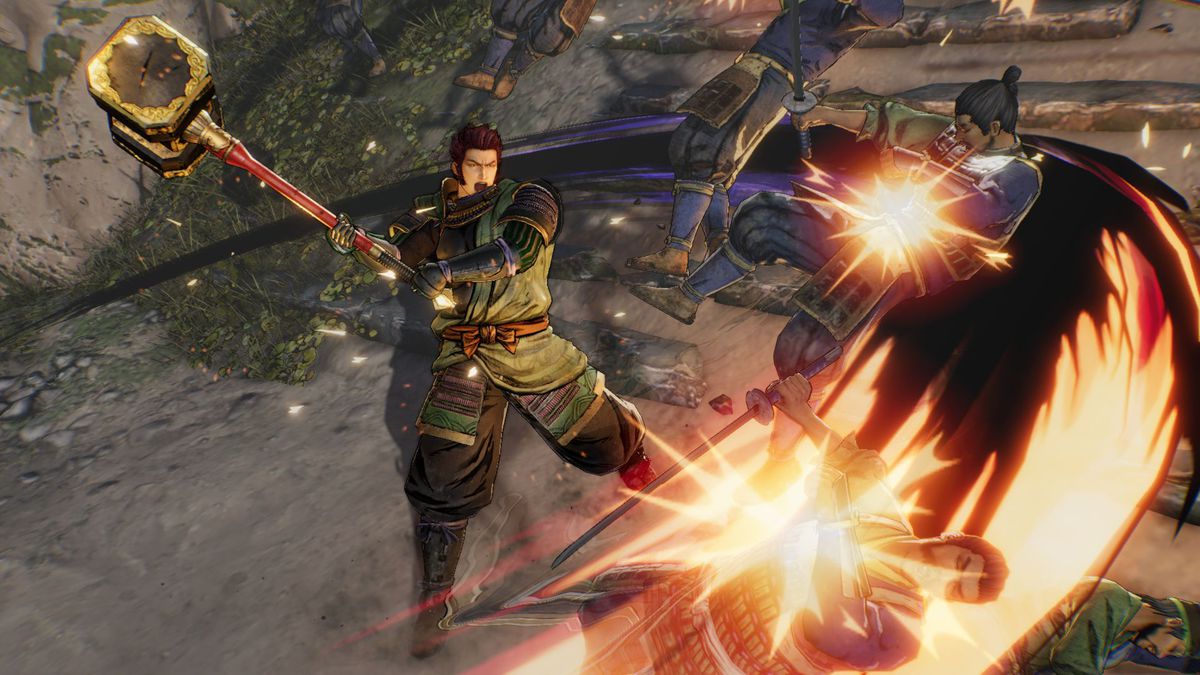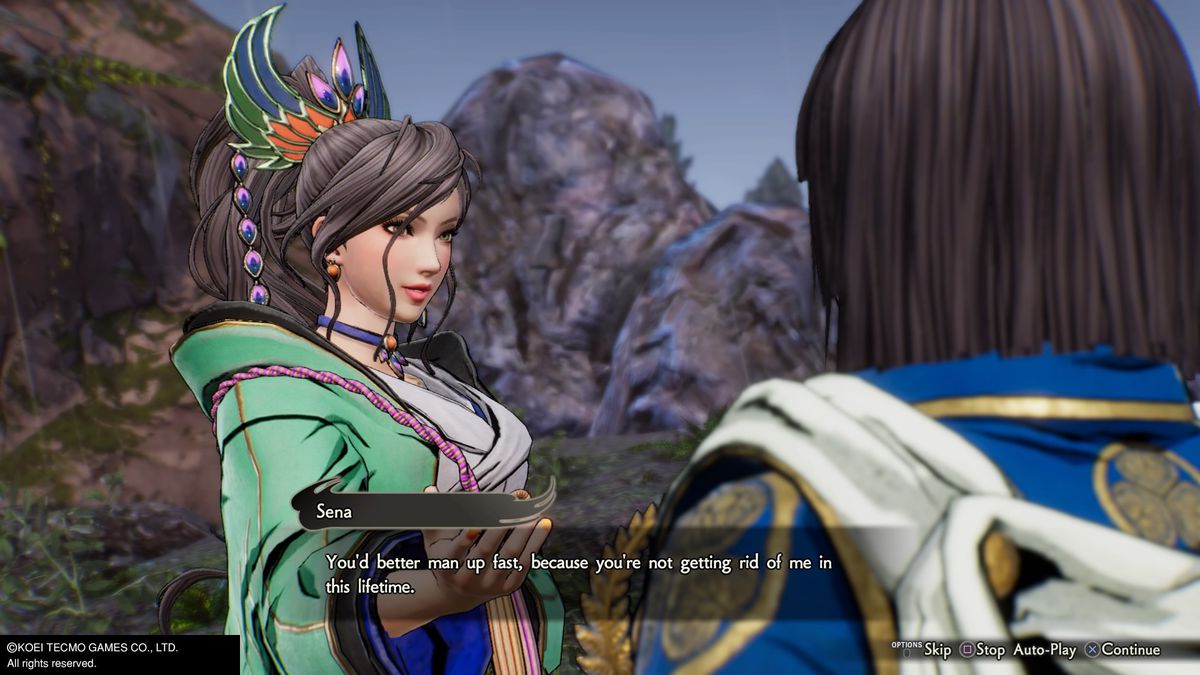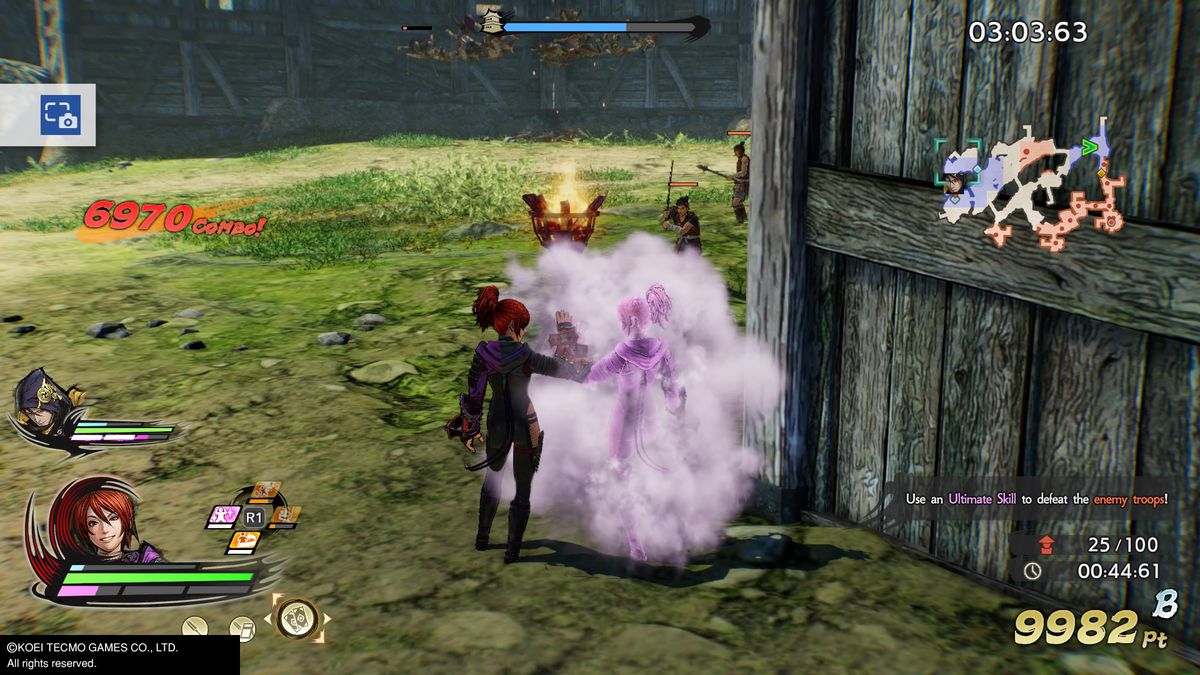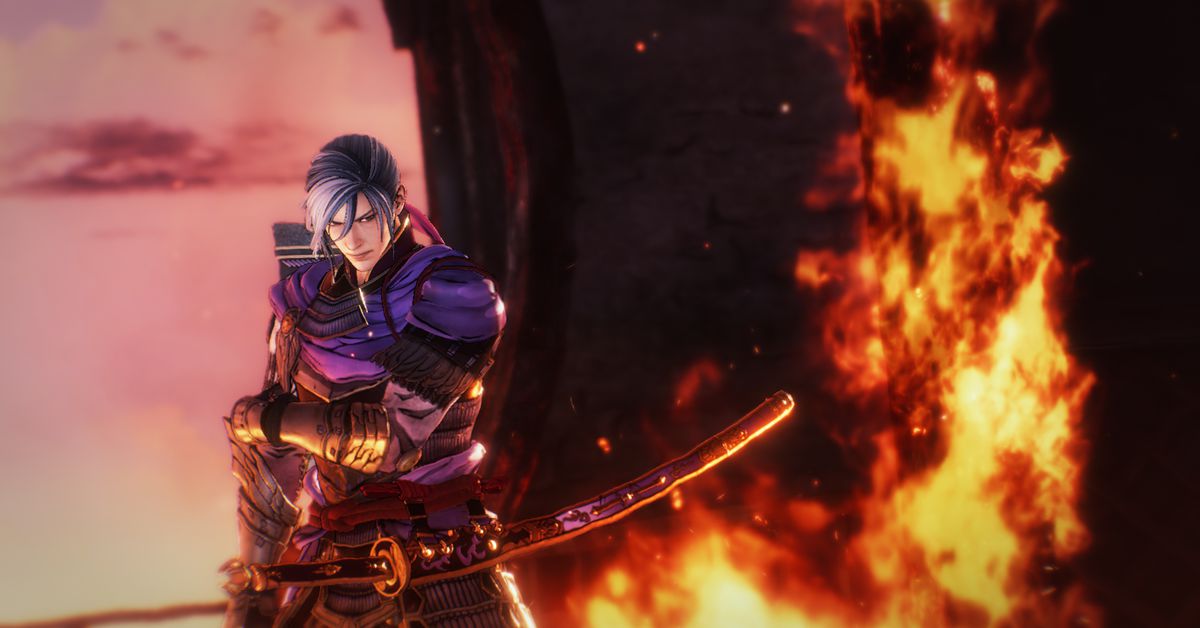I’ve been a fan and player of Musou games (or “Warriors games,” if you’re a dubs instead of subs person) since they were brand-spanking new — 20 years at this point. I’ve been with them from 2000’s Dynasty Warriors 2, the very first, right up to now. After a week and a half with Samurai Warriors 5, I have a confession to make:
I don’t know how to talk to people about Musou games anymore.
When Polygon approached me about writing this piece, the original idea was that I would be writing a review of Samurai Warriors 5, from a Musou lifer’s perspective. So, as I played it, that’s the mindset I was in: Looking at gameplay, graphics, presentation elements, how it “felt.” I could definitely write that story if I wanted to. The game looks great; the cel-shaded, woodblock print-style art is colorful and pops. The fluid combat will be familiar to players of Samurai Warriors 4, which it builds on and refines. The story’s focus on the Nobunaga/Mitsuhide dyad has strong, trope-y Naruto/Sasuke vibes, but the result is a perfectly serviceable shounen manga-ish narrative.
There you go! Review over. Thanks for coming to my TED talk.

Image: Koei Tecmo
None of that tells you anything meaningful about the experience of playing the game, though. How can I properly convey to people that, despite hearing myself go full-on Mermista_uuuugh.wav in frustration numerous times in my many, many hours with SW5, that I still thoroughly enjoyed it?
I’m willing to blame the genre on this one. A Musou game subseries (such as Samurai Warriors, Dynasty Warriors, Warriors Orochi, and so forth) has a lot in common with the Final Fantasy mainline games; they’re gameplay iterations wrapped around a common narrative core. Unlike Final Fantasy, though, most Musou sequels are pretty similar to the ones before them. Specific subsystems may differ, but the core thing you do is pretty much the same every time: you beat the hell out of a bunch of faceless mooks, with the occasional dash of “duel a famous officer” or “run across the damn map like a person on fire to reach an objective, which is probably more mook murder.”
Thus, as you’d expect, there’s very little that’s entirely new in SW5. Its combat is largely built on the core of its immediate predecessor, with new elements like Ultimate Skills being familiar to players of licensed Musou games like Dragon Quest Heroes or Persona 5 Strikers. Most of the changes are aesthetic: The new art and visual style, re-designs of longtime characters, the narrowing of the game’s focus to the rise and fall of Nobunaga Oda. In a genre where the narrative is largely high gloss, hyperkinetic set dressing, this might not be enough for players expecting an entirely new experience.
Yet for me, the archetypal Musou repeat offender, there was something fascinating about the changes the designers decided to make. A few of these shifts are extreme; in previous SW games, Yoshimoto Imagawa is presented as a powder-faced, squeaky-voiced weirdo obsessed with an antiquated Japanese soccer analogue, a joke equivalent to DW’s prissy Yuan Shao. In SW5, he’s a towering brute of a man, a severe and arrogant hegemon who nevertheless is the first stepping stone on Nobunaga’s path to greatness. Nobunaga’s wife Nō-hime gives up her sultry, murderous vamp persona in previous SWs to become a laconic wife forced into a loveless marriage who eventually comes to love her husband. Not all of these changes land — Ieyasu Tokugawa’s transformation from hefty older statesman to tiny bishounen twink is baffling — but for longtime series fans, they and the handful of new characters create enough friction with previous versions to generate interest.

Image: Koei Tecmo via Polygon
A dutiful consumer-journalist would point out some of the game’s more glaring flaws: a vertigo-inducing lock-on camera that has forgotten what “collision” is, for example. The lack of an English voice track in a game that defines “visual clutter” but expects you to read lengthy on-screen narrative text on a routine basis. The reduction of the previous game’s 45-plus individual movesets into 15 shared weapons, a chestnut that already has some longtime Musou folks up in arms.
But then I think about the raw text file open on my desktop as I write this, filled with notes on the intricacies of the different weapons and how they work. It reads like a conspiracy cork board in more than a few ways. An example: “talisman c3 shikigami — child? priest? what kind of origami looks vaguely person-ish but would shoot fireballs?” The morning I wrote this, I spent half an hour puzzling out how the changing of ammunition works for the Cannon, and felt the heady joy of understanding when I figured out the difference between buckshot, bullet mines, and explosive shells, a difference the game barely explains.
So I’m left here with a tale of a game that could be deeply frustrating and is almost certainly a future repetitive motion injury waiting to happen, but also one that, in spite of all that, captured my attention and pulled me into way, way, way more hours of gameplay than the amount required to write this article (49 hours, as of this writing).
As I sat down to write, I kept asking myself: how can I properly answer the hypothetical reader who asks the dreaded question: “Will I enjoy this?” If I come at it solely as a consumer review, what you get is a very staid and lifeless result that says nothing about the actual experience of what playing SW5 was like for me. “The graphics on level 3 seem appropriately tightened, five out of five” does nothing to drive home the importance of that hour of experimenting with a weapon’s vaguely explained properties, not because I needed that mechanical knowledge to win, but because knowing it felt cool.

Image: Koei Tecmo via Polygon
Yet at the same time, some of that nuts and bolts stuff I mentioned earlier is really necessary for you to know. That moveset thing, the lack of English acting … those will be make-or-break facts for long-time Musou players. And all of this is before any kind of pushback I’d be making about the genre’s notorious (and not entirely undeserved) reputation for mindless button-mashing. Yeah, the game was compelling to me, but I’ve also sunk twenty years of my life into Musou games. Would someone without that context get any useful information out of me describing my gleeful cackling when Mitsuki high-fives a shadow clone of herself at the end of one of her attacks? Probably not.
Thus … I don’t know how to talk to people about Musou games anymore. So here, you get a little bit of both: a touch of the dry system overview and a hint of stuff that made me go “… dude!” aloud while playing.
In the end, the most I can say is this: Yeah, over a week and change, I spent a lot of time in Warring States-era Japan making a series of emphatic Mermista “UUUUUUGH”s, but maybe that happened because when something shows occasional touches of craft and brilliance, your desire to sand off the last of its rough edges is all the stronger.
Samurai Warriors 5 will be released July 27 on Nintendo Switch, PlayStation 4, Xbox One, and Windows PC. The game was reviewed on PlayStation 4 using a pre-release download code provided by Koei Tecmo. Vox Media has affiliate partnerships. These do not influence editorial content, though Vox Media may earn commissions for products purchased via affiliate links. You can find additional information about Polygon’s ethics policy here.
Polygon – All
Source link
Related Post:
- Samurai Warriors 5 Has Shipped 280,000 Units, Ninja Gaiden at 240,000; Koei Tecmo Announces Record Financial Results
- Koei Tecmo says Samurai Warriors series sales are now over eight million
- Hands On: Samurai Warriors 5 Has the Potential to Be a Special Musou Game
- Touken Ranbu Musou is a New Switch and PC Warriors Game
- Samurai Warriors 5 Review (PS4)
- Samurai Warriors 5 review — The attack of the clones
- Samurai Warriors 5 Review – The Final Verdict
- Samurai Warriors 5 Review
- Interview: Samurai Warriors 5 Producer on the Reboot’s New Direction, Weapon Changing System, and More
- Switch file sizes – Samurai Warriors 5, Shadowverse: Champion’s Battle, Boomerang X, Blaster Master Zero 3, more
